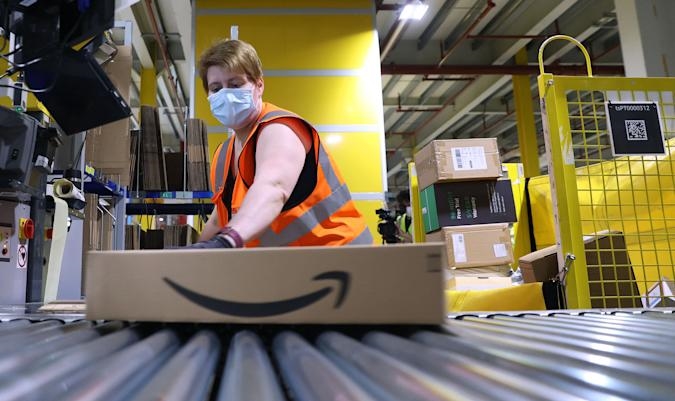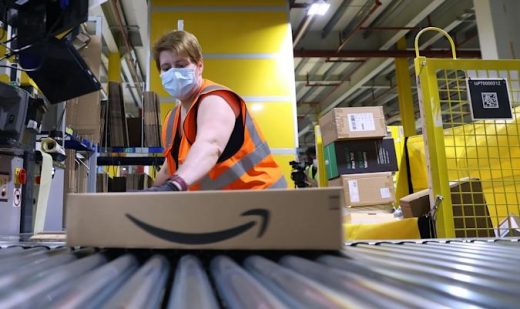California governor signs warehouse productivity quota bill into law
California could force Amazon to improve conditions for warehouse workers
A bill targeting warehouse quotas is expected to go to a State Senate vote this week.


A California bill centered around warehouse labor issues is set to go to a State Senate vote this week. Should it become law, the legislation could require Amazon and other warehouse companies to make significant changes. Bill AB-701, which passed the State Assembly in May, would force warehouse operators like Amazon to be transparent about the quotas their workers are expected to meet.
“The bill would provide that an employee shall not be required to meet a quota that prevents compliance with meal or rest periods, use of bathroom facilities or occupational health and safety laws,” the legislative counsel’s digest for the proposed legislation reads. The bill also seeks to ban employers from punishing employees who don’t meet quotas that don’t allow them to take breaks or comply with health and safety rules. If workers can’t realistically hit Amazon’s productivity expectations, the company may have to lower quotas in the state.
Several Amazon workers have spoken of foregoing or minimizing bathroom breaks to ensure they meet quotas. According to reports, the company’s expectations lead many delivery drivers to pee in bottles and coffee cups instead of taking time to use a restroom. Warehouse workers have shared similar complaints. Amazon closely monitors worker productivity, including how long each employee spends away from their stations.
An Amazon spokesperson told The New York Times that “terminations for performance issues are rare,” but they didn’t comment directly on the bill.
Last year, it emerged that Amazon reportedly expects workers to scan 400 items an hour at fulfillment centers that use robots. According to a report from the Center for Investigative Reporting, the rate of serious injuries sustained at those warehouses was 50 percent higher than in Amazon warehouses that aren’t automated.
Warehouse injury researcher Edward Flores, faculty director of the Community and Labor Center at the University of California, Merced, told the NYT that repetitive strain injuries are a problem in automated warehouses. Workers are “responding to the speed at which a machine is moving,” which leads to “higher incidence of repetitive motions and thus repetitive injuries,” Dr. Flores said.
Amazon announced some measures aimed at reducing warehouse injuries in May. The plans included meditation kiosks and zones where workers can stretch, as well as hourly “mind and body” prompts.
The company has a long history of controversial labor practices. At the start of this year, Amazon shut down a warehouse in Chicago where workers held walkouts and protested for improved working conditions. Some of those employees said they were given a choice between working 10-hour graveyard shifts at other fulfillment centers or finding a new job. At the time, Amazon denied that was the case.
In August, a National Labor Relations Board official recommended that workers at an Amazon warehouse in Alabama hold another union vote. The Retail, Wholesale and Department Store Union accused Amazon of violating labor laws by interfering with the process. Workers at the fulfillment center voted against unionizing.
(30)


